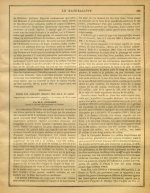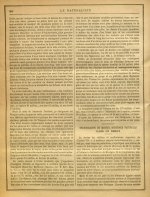Björn Bergenholtz
(former alias "Calalp")

Here´s another French Eponymical Bird exercise … that, I guess, requires some knowledge of Italian!?
At this point … as far as I understand, or at least think I do, the: Brazza’s Martin Phedina brazzae OUSTALET 1886 (a k a "Brazza's Congo Martin", "Brazza's Swallow" or just "Congo Martin") … commemorates the Italian explorer, naturalist and collector Giacomo Savorgnan di Brazzà (1859–1888) a k a (in French) Jacques Savorgnan de Brazza (sometimes written with or without apostrophe … in either direction).
This Giacomo di Brazzà explored and collected together with his fellow countryman Attilio Pecile (1856–1931) [among others like; François Rigail de Lastours (1855–1885) and Count (Conte) Pietro Antonelli (18XX–XX] in French Congo (= todays Democratic Republic of Congo, Africa) in the years 1883 and 1884.
Not to be confused with his more famous older brother; Count (Conte) Pietro Paolo Savorgnan di Brazzà (1852–1905) a k a (in French) Comte de Pierre Paul Savorgnan de Brazza.
In the type description; Oustalet, E. 1886. Notice sur quelques Oiseaux Noveaux du Congo. Le Naturaliste: journal des échanges et des nouvelles 8: 299-300. (attached)... the Brazza's (as de Brazza) is mentioned quite a few times!
Can anyone please explain, in short, what it tells us?
The article starts, for example, with the sentence:
And further down:
And finally: Does this text tell us anything else of this either di Brazza?
------------------------------------------------------------------------------
PS. In the same article is also: "Coccystes Brazzæ" = Pachycoccyx audeberti brazzae OUSTALET 1886.
At this point … as far as I understand, or at least think I do, the: Brazza’s Martin Phedina brazzae OUSTALET 1886 (a k a "Brazza's Congo Martin", "Brazza's Swallow" or just "Congo Martin") … commemorates the Italian explorer, naturalist and collector Giacomo Savorgnan di Brazzà (1859–1888) a k a (in French) Jacques Savorgnan de Brazza (sometimes written with or without apostrophe … in either direction).
This Giacomo di Brazzà explored and collected together with his fellow countryman Attilio Pecile (1856–1931) [among others like; François Rigail de Lastours (1855–1885) and Count (Conte) Pietro Antonelli (18XX–XX] in French Congo (= todays Democratic Republic of Congo, Africa) in the years 1883 and 1884.
Not to be confused with his more famous older brother; Count (Conte) Pietro Paolo Savorgnan di Brazzà (1852–1905) a k a (in French) Comte de Pierre Paul Savorgnan de Brazza.
In the type description; Oustalet, E. 1886. Notice sur quelques Oiseaux Noveaux du Congo. Le Naturaliste: journal des échanges et des nouvelles 8: 299-300. (attached)... the Brazza's (as de Brazza) is mentioned quite a few times!
Can anyone please explain, in short, what it tells us?
The article starts, for example, with the sentence:
"M. S. de Brazza"? Plural? Double titles, as in; Monsieur Signor !? Or the older brother?"Les collection dʼhistoire naturelle qui ont été recueillies sur divers points du Gabon et du Congo par les membres de la mission de M. S. de Brazza … "
And further down:
Without knowing any French I have to ask: Anyone feel like translating those two quotes? If so, please as accurate as possible, as I would like to quote them myself in Swedish. And don´t hesitate to remark on any errors that I might have done transcribing it!"Lʼindividu que je viens de dècrire est indiqué comme étant du sexe féminin; il a été le 26 juin 1884 au poste Ganciù (ou Nganciou) par MM. J. de Brazza et Pecile.
Enfin, je proposerai dʼinscrire dans les catalogues ornithologiques sous le nom Phedina Brazzæ une Hirondelle tuée dans la mème localité le 19 juillet 1884 et différent …"
And finally: Does this text tell us anything else of this either di Brazza?
------------------------------------------------------------------------------
PS. In the same article is also: "Coccystes Brazzæ" = Pachycoccyx audeberti brazzae OUSTALET 1886.







